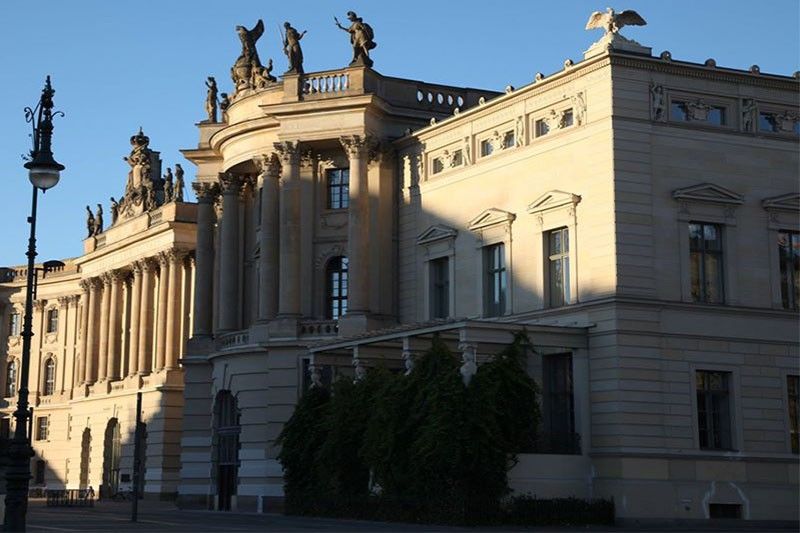The ultimate luxury retreat in the Philippines
A Philippine private-island paradise, Amanpulo is the ultimate tranquil treat, says Matt Hryciw
Matt Hryciw | Standard.co.uk
14 November 2019
Any holiday that begins on a private plane is going to be exclusive from the word to go. Taking off from the Philippine capital, Manila, from a VIP lounge out of sight from the melee of the main airport set the tone for five days at Aman's showpiece private island resort, Amanpulo, a trip would create a new benchmark for me in understated luxury and personalized service.
14 November 2019
Any holiday that begins on a private plane is going to be exclusive from the word to go. Taking off from the Philippine capital, Manila, from a VIP lounge out of sight from the melee of the main airport set the tone for five days at Aman's showpiece private island resort, Amanpulo, a trip would create a new benchmark for me in understated luxury and personalized service.
What's left to say about a place that's attained nearly legendary status in luxury travel circles? An hour's flight southwest of the traffic-choked capital, Pamalican Island in remote Palawan province feels like another world, with all the trappings of a luxury resort including hilltop spa and gourmet dining, but also with an immediate sense that you've just landed in a tropical wildlife preserve. I stepped out of the plane into a relative cool after a morning of welcome heavy rain and was greeted warmly by my personal guest assistant, Mark, who would be looking after me during my stay. He led me to a solar-powered golf cart where I hopped in for a tour of the 2.5km-long island. Around the first corner we slowed to let a four-foot monitor lizard lazily cross our path on our way to the island's turtle hatchery to check for the new arrivals, before pulling up to the beach that would be my home for the next five days.
Laying eyes on the beaches of Pamalican Island for the first time is much of what makes this private isle such a draw. All the daydreaming poring over photos online of the famously powdery white sand and sparkling turquoise ocean still hadn’t prepared me for having all those expanses — 5.5km in total — of shore virtually to myself. This is where the use of superlatives to describe Amanpulo’s biggest asset seems unavoidable: if you’re a sun-worshipper or simply love floating in a crystal clear, shallow sea above schools of colourful fish all by yourself, this is unparalleled heaven.
Guests at Amanpulo can choose from two types of accommodation. First there are the 42 private, stand-alone rooms like mine called ‘casitas’, which are either cleverly tucked behind the coconut palms along the beach or nestled into the island’s lush interior. For a proper splurge, go for the larger, family-friendly, ultra-luxe villa compounds that boast their own pools and come with a personal chef and butler — naturally. My beach casita became my tranquil oasis, where I’d look up from my king-size bed at vaulted hardwood ceilings or out over my private corner terrace with it’s two heavenly sun beds, down my very own sandy path to the beach. It was there that I really got a sense of the refined, ultimate privacy that’s so sought after at Amanpulo.
For a little more action, the Clubhouse acts as a hub for the island and hosts the wood-paneled library for games of backgammon as well as South East Asian all-day dining with an elegant feel. This space hugs the vast main pool deck, all clean lines and gleaming all white sun loungers. Try the Philippine Dining Experience for an impressive introduction to the nation's best flavours.
For a little more action, the Clubhouse acts as a hub for the island and hosts the wood-paneled library for games of backgammon as well as South East Asian all-day dining with an elegant feel. This space hugs the vast main pool deck, all clean lines and gleaming all white sun loungers. Try the Philippine Dining Experience for an impressive introduction to the nation's best flavours.
My favourite spot for breakfast was in the breeze at the Lagoon Club, overlooking miles of coral reef, while a casual meal of pizza hot from the outdoor oven at tables in the sand made for a lunch light years from those back at my office desk. By Christmas, the revamped Beach Club on the opposite shore will take over as a show-stopping all-day dining venue and bar.
Getting around the island’s gravel roads was fun, too. I got to keep my golf cart — no driving licence required — to zip to meals or to farther beaches. That’s the freeing thing about Amanpulo: since its the only gig around I had free rein to explore everywhere on the island that didn’t require a key to enter. The only roadworks I saw were jolly guys up an overhanging tree removing coconut hazards. Plus, 7am trips to the light-filled gym, with 360-degree sea and jungle canopy views, were easy on the mountain bike I was given for my stay, which added extra animal-spotting to my routine.
All of this is run with sustainably in mind. There’s a desalination plant for safe drinking water (no plastic bottles needed), treated wastewater keeps the island lush and many of the vegetables served are grown on the island. And I was taken care of by a friendly army of staff, many of whom live on the island year-round and know it inside-out.
What became clear to me during my stay was how much thought — and work — has gone into carefully creating this tranquil paradise and then perfecting it over the past 25 years. Experience it, if you can.








